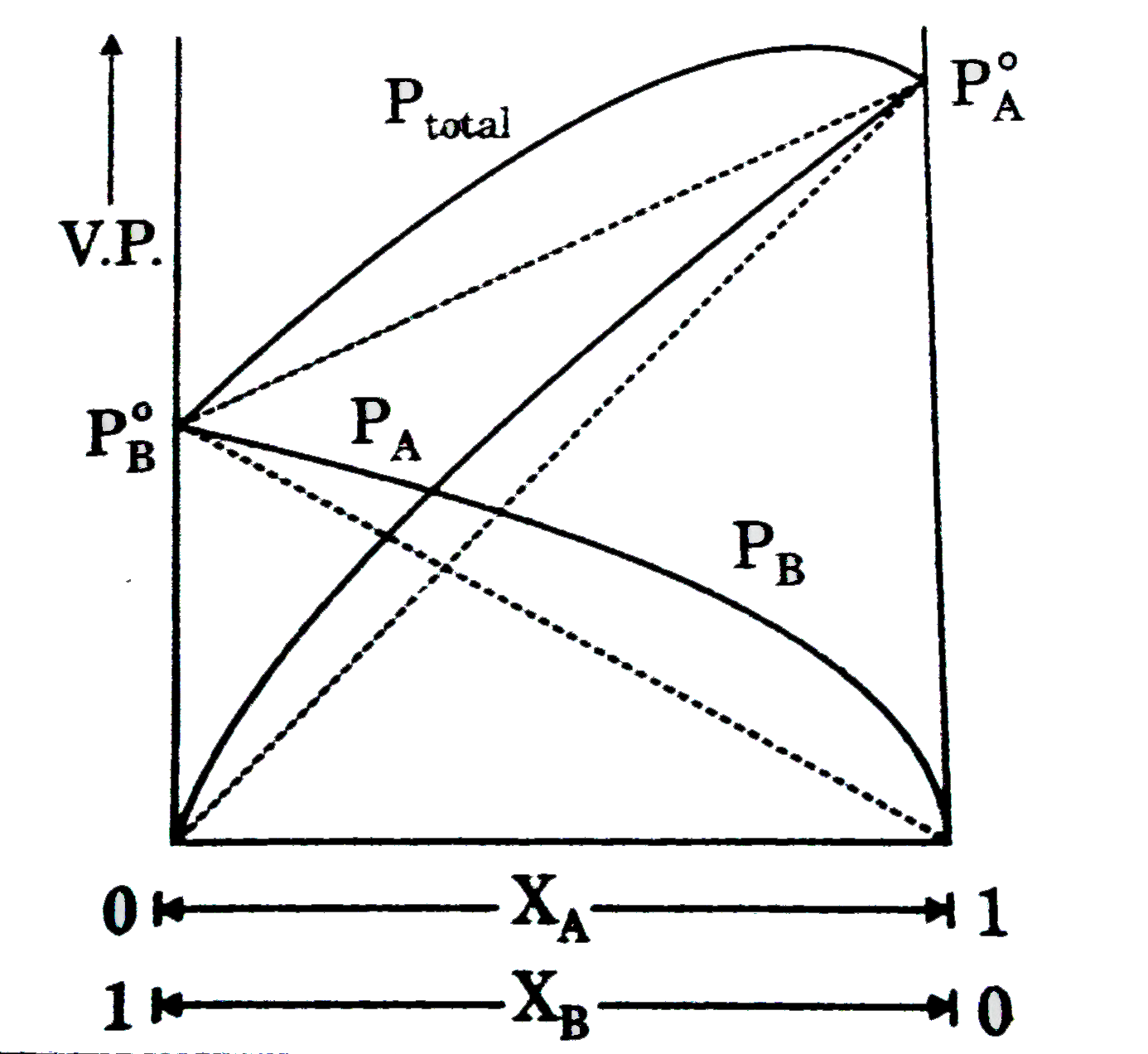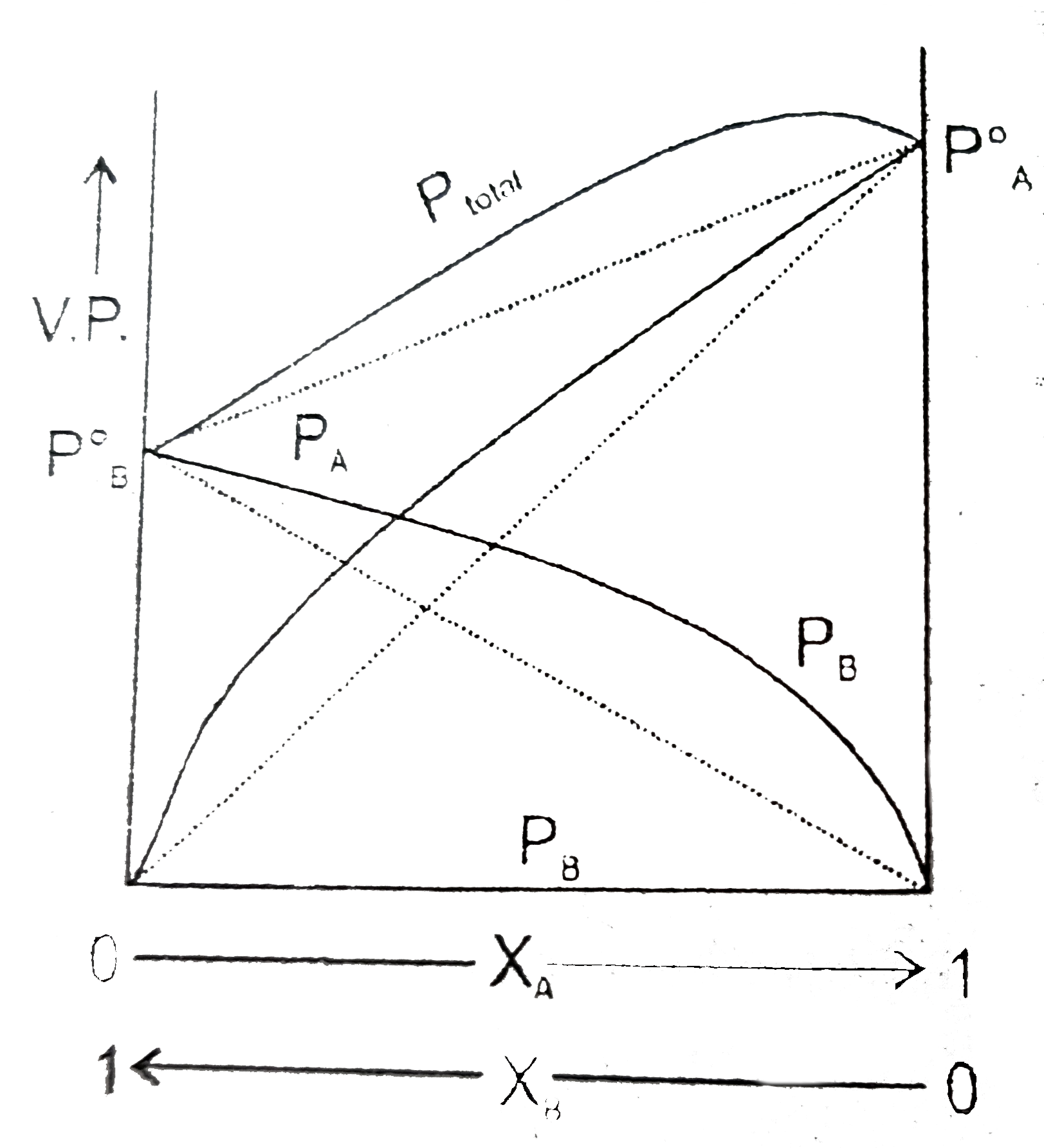Give reasons for the following :
(a) When 2g of benzoic acid is dissolved in 25 g of benzene, the experimentally determined molar mass is always greater than the true value.
(b) Mixture of ethanol and acetone shows positive deviation from Raoult's Law.
(c) The preservation of fruits by adding concentrated sugar solution protects against bacterial action.
(a) Molecules of benzoic acid dimerise in benzen. the number of particles are reduced.
(b) The intermolecular interactions between ethanol and acetone are weaker/the escaping tendency of ethanol and acetone molecules increases on mixing/the vapour pressure increases.
(c) Due to osmosis, a bacterium on fruit loses water, shrivels and dies
Topper's Solved these Questions
- BOOK - XII BOARDS PREVIOUS YEARCHAPTER - XII BOARDSEXERCISE - IMPORTANT QUESTIONS FOR PRACTICE CHEMISTRY (THEORY-XII) UNSOLVED)42videos
XII BOARDS
- BOOK - XII BOARDS PREVIOUS YEARCHAPTER - XII BOARDSEXERCISE - SET- I35videos
XII BOARDS
- BOOK - XII BOARDS PREVIOUS YEARCHAPTER - XII BOARDSEXERCISE - QUESTION PAPER (SECTION-B)10videos
XII BOARDS
- BOOK - XII BOARDS PREVIOUS YEARCHAPTER - SAMPLE PAPER 2019EXERCISE - SECTION: D1videos
SAMPLE PAPER 2019
Similar Questions
The experimentally determined molar mass for what type ofsubstances is always lower than the true value when water is used as solvent. Explain. Give one example of such a substance and one example of a substance which does not show a large variation from the true value.
View SolutionNitrobezene is formed as the major product along with a minor product in the reaction of benzene with a hot mixture of nitric acid and sulphuric acid. The minor product consists of carbon: 42.86%, hydrogen: 2.40%, nitrogen: 16.67%, and oxygen: 38.07% (i) Calculate the empirical formula of the minor product, (ii) when 5.5 gm of the minor product is dissolved in 45 gm of benzene, the boioling point of the solution is 1.84∘C higher than that of pure benzene. Calculate the molar mass of the minor product and determine its molecular its molecular and structural formula. (Molal boiling point elevation constant of benzene is 2.53Kkgmol−1.)
View Solution
Knowledge Check
- Question 1 - Select One
Answer the questions (given below) which are based on the following diagram ?

Consider some facts about the above phase diagram. Vapour pressure diagram for real solutions of two liquids A and B that exhibit a positive deviation from Raoult's law. The vapour presssure of both A and B are greater than predicted by Raoult's law. The dashed lines represented the plots for ideal solutions.
A : This is obserbed when A...B attractions are greater than average of A...B and B.....B attraction :
B : ΔHmix=+ve,ΔVmix=+ve
C : Boiling point is smaller than expected such that vaporisation is increased
D : Mixture can from azeotropic mixture Select correct facts.AA,B,CBB,C,DCA,C,DDA,B,C,D - Question 2 - Select One
Answer the question (given below) which are based on the following diagra.

Consider some facts about the above phase diagram :
Vapour pressure diagram for real solutions of two liquids A and B that exhibit a positive deviation from Raoult's law. The vapour pressure of both A and B are greater than predicted by Raoult's law. The dashed lines lines represented the plots for ideal solutions.
A: This is observed when A...B attraction are greater than average of A...B and B...B attraction:
B: ΔHmix=+ve,ΔVmix=+ve
C: Boiling point is smaller than expected such that vaporisation is increased
D: Mixture is called azeotropic mixture
Select correct factsAA,B,CBB,C,DCA,C,DDA,B,C,D - Question 3 - Select One or More
Acetone and carbon disulphide form binary liquid solution showing positive deviation from Raoult's law. The normal boiling point (Tb) of pure acetone is less than that of pure CS2. Pick out the incorrect statement among the following :
ABoiling temperature of mixture is always less than boiling temperature of acetone.BBoiling temperature of Azeotropic mixture is always less than boiling temperature of pure CS2CWhen a small amount of CS2 (less volatile comoponent) is added to excess of aceton boiling point of resulting mixture increases.DA mixture of CS2 and CH3COCH3 can be completely separated by simple fractional distillation.
Nirtobenzene is formed as the major product along with a minor product in the reaction of benzene with a hot mixture of nitric acid and sulphuric acid. The minor product consists of carbon 42.86%, hydrogen 2.40%, nitrogen 16.67% and oxygen 38.07%.
a. Calculate the empirical formula of the minor product.
b. When 5.5g of the minor product is dissolved in 45g of benzene, the boiling point of the solution is 1.84C higher than that of pure benzen. Calculate the molar mass of the minor product and determine its molecular and structural formulae. (Molar elevation constant of benzene is 2.53Kkgmol−1)View SolutionCopper oxide was prepared by the following methods :
(a) In one case, 1.75 g of the metal were dissolved in nitric acid and igniting the residual copper nitrate yielded 2.19 g of copper oxide.
(b) In the second case, 1.14 g of metal dissolved in nitric acid were precipitated as copper hydroxide by adding caustic alkali solution. The precipitated copper hydroxide after washing, drying and heating yielded 1.43 g of copper oxide.
(c) In the third case, 1.45 g of copper when strongely heated in a current of air yielded 1.83 g of copper oxide. Show that the given data illustrate the law of constant composition.View SolutionThe value of any colligative property of any electrolyte is determined experimentally, it is found to be higher than the theoretically calculated vallue using the usual expressions. This is because the electrolytes undergo dissociation in the solution. Similarly, in case of some substances association takes place, e.g., acetic acid in benzene and the experimental value of colligative value. The experimentally observed molar masses come out to be different than the theoretical values. These are called abnormal molar masses. In such cases, a correction factor, i, called van't Hoff factor is introduced which is a ratio of observed value of colligative property to calculated value when the solution behaves ideally. Knowing i, the degree of dissociation or association of the solute can be calculated.
The boiling point of 0.1 molal K4[Fe(CN)6] solution will be (Given Kb for water =0.52∘C kg mol−1)View SolutionThe value of any colligative property of any electrolyte is determined experimentally, it is found to be higher than the theoretically calculated vallue using the usual expressions. This is because the electrolytes undergo dissociation in the solution. Similarly, in case of some substances association takes place, e.g., acetic acid in benzene and the experimental value of colligative value. The experimentally observed molar masses come out to be different than the theoretical values. These are called abnormal molar masses. In such cases, a correction factor, i, called van't Hoff factor is introduced which is a ratio of observed value of colligative property to calculated value when the solution behaves ideally. Knowing i, the degree of dissociation or association of the solute can be calculated.
The van't Hoff factor for 0.1MBa(NO3)2 solution is 2.74. The degree of dissociation isView SolutionThe value of any colligative property of any electrolyte is determined experimentally, it is found to be higher than the theoretically calculated vallue using the usual expressions. This is because the electrolytes undergo dissociation in the solution. Similarly, in case of some substances association takes place, e.g., acetic acid in benzene and the experimental value of colligative value. The experimentally observed molar masses come out to be different than the theoretical values. These are called abnormal molar masses. In such cases, a correction factor, i, called van't Hoff factor is introduced which is a ratio of observed value of colligative property to calculated value when the solution behaves ideally. Knowing i, the degree of dissociation or association of the solute can be calculated.
Which of the following aqueous solution will have the highest freezing pointView Solution

